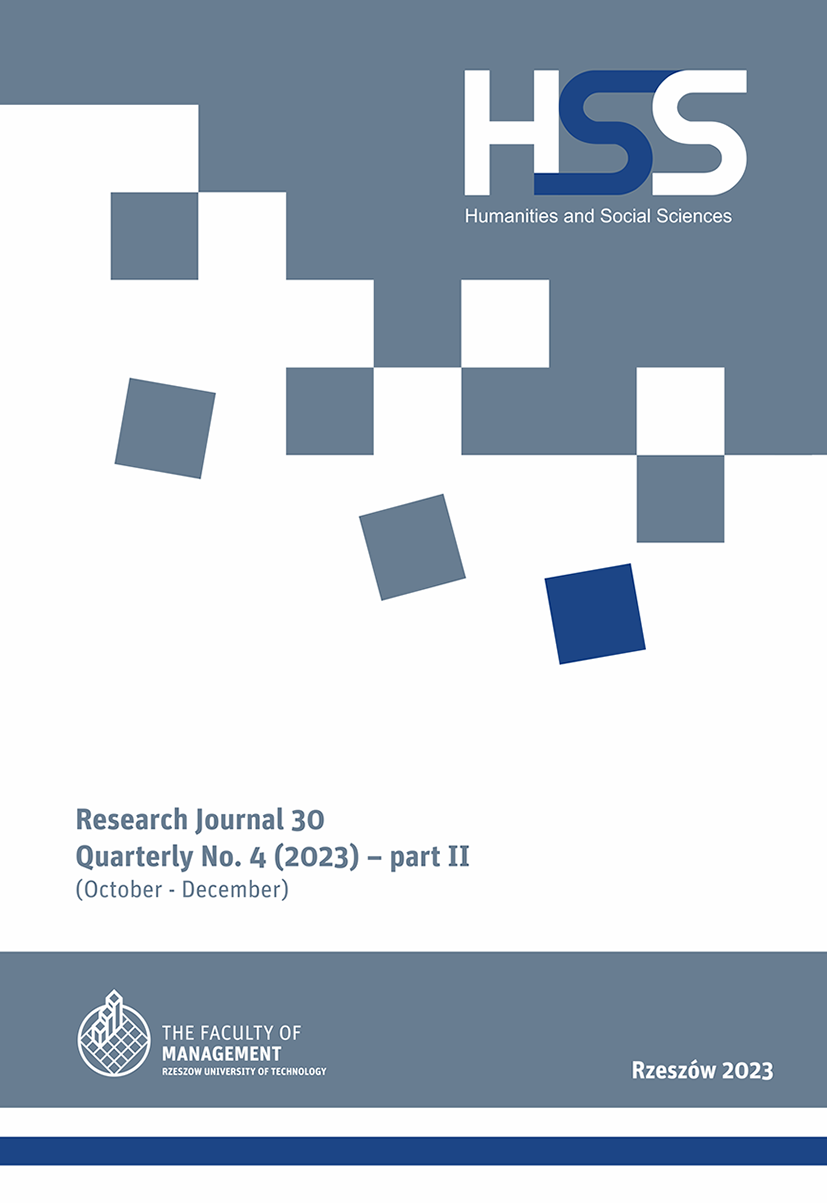Abstract
Moving around an urban area by vehicle and the act of parking are an almost integral part of everyday urban travel. Proper organization of parking spaces and the convenience of using them by drivers is key to follow the idea of sustainable urban development and manage the mobility of urban infrastructure users. Parking is influenced by many technical, organizational, economic and social factors. The aim of this work was to analyze and evaluate the functioning of the paid parking zone in Rzeszów, a voivodeship city located in the south-eastern Poland. In the presented case study, the authors, based on data collected from the Metropolis Intelligent Paid Parking System (PPS), determined the occupancy levels of parking subzones in the studied periods of time and analyzed the obtained results. The data and designated indicators available in the system can be the basis for taking appropriate steps to enable effective city management, which will result in, among others increasing the quality of life of residents.
References
Attaran, H., Kheibari, N., Bahrepour, D. (2022). Toward integrated smart city: a new model for implementation and design challenges. “GeoJournal”, Vol. 87, No. 4. DOI: 10.1007/s10708-021-10560-w.
Battarra, R., Gargiulo, C., Tremiterra, M.R., Zucaro, F. (2018). Smart mobility in Italian metropolitan cities: A comparative analysis through indicators and action. “Sustainable Cities and Society”, Vol. 41. DOI: 10.1016/j.scs.2018.06.006.
Bellini, P., Nesi, P., Pantaleo, G. (2022). IoT-Enabled Smart Cities: A Review of Concepts, Frameworks and Key Technologies. “Applied Sciences”, Vol. 12, No. 1607. DOI: 10.3390/app12031607.
Bismantoko, S., Haryono, A., Widodo, T. (2018). Parking Management System Optimization on the Street in Order to Reduce Transport Problems by Using a Prototype of Integrated Parking Management System (Case Study: Parking Area at Alun-Alun Utara Kota Pekalongan). “Advances in Engineering Research”, Vol. 186, 11th Asia Pacific Transportation and the Environment Conference (APTE 2018).
Chou, S.-Y., Dewabharata, A., Zulvia, F.E. (2021). Dynamic Space Allocation Based on Internal Demand for Optimizing Release of Shared Parking. “Sensors”, Vol. 22, No. 235. DOI:10.3390/s22010235.
Cruz, S., Paulino, S. (2020). Urban Commons in Active Mobility Experiences. “International Journal of the Commons”, Vol. 14, No. 1. DOI:10.5334/ijc.1018.
Dobrzański, P., Śmieszek, M., Dobrzańska, M. (2020). Bicycle transport within selected Polish and European Union cities. “Humanities and Social Science”, Vol. 27, No. 2. DOI:10.7862/rz.2020.hss.16.
Fokker, E.S., Koch, T., Leeuwen, M., Dugundji, E.R. (2022). Short-Term Forecasting of Off-Street Parking Occupancy. “Transportation Research Record”, Vol. 2676, No. 1. DOI:10.1177/03611981211036373.
Gebresselassie, M., Sanchez, T.W. (2018). „Smart” Tools for Socially Sustainable Transport: A Review of Mobility Apps. “Urban Science”, Vol.2, No. 45. DOI:10.3390/urbansci2020045.
Hilmaniy, A., Maizate, A., Hassouni, L. (2018). Designing and Managing a Smart Parking System Using Wireless Sensor Networks. “Journal of Sensor and Actuator Networks”, Vol. 7, No. 24. DOI:10.3390/jsan7020024.
https://bdl.stat.gov.pl/bdl/dane/podgrup/teryt [Access: 21.05.2023].
https://play.google.com/store/apps/details?id=pl.assecods.matip&pcampaignid=web_share [Access: 3.05.2023].
https://www.assecods.pl/ [Access: 2.05.2023].
https://www.un.org/sustainabledevelopment/cities/ [Access: 6.05.2023].
Huk, K., Górak, A. (2021). Impact of private transport on the environment and society in the concept of city logistics and life cycle assessment. “Acta logistica”, Vol. 8, No. 3. DOI: 10.22306/al.v8i3.251.
Janak, P., Pritikana, D., Sanjaykumar, M.D. (2020). Study on demand and characteristics of parking system in urban areas: A review “Journal of traffic and transportation engineering”, Vol. 7, No. 1. DOI:10.1016/j.jtte.2019.09.003.
Leo, A., Morillón, D., Silva, R. (2017). Review and analysis of urban mobility strategies in Mexico. “Case Studies on Transport Policy”, Vol. 5. DOI:10.1016/j.cstp.2016.11.008.
Olayode, I.O., Tartibu, L.K., Okwu, M.O., Uchechi, U.F. (2020). Intelligent transportation systems, un-signalized road intersections and traffic congestion in Johannesburg: a systematic review. “Procedia CIRP”, Vol. 91. DOI:10.1016/j.procir.2020.04.137.
Oliveira, T.A., Gabrich, Y.B., Ramalhinho, H., Oliver, M., Cohen, M.W., Ochi, L.S., Gueye, S., Protti, F., Pinto, A.A., Ferreira, D.V.M., Coelho, I.M., Coelho, V.N. (2020). Mobility, Citizens, Innovation and Technology in Digital and Smart Cities. “Future Internet”, Vol. 12, No. 22. DOI:10.3390/fi12020022.
Ouafiq, E.M., Raif, M., Chehri, A., Saadane, R. (2022). Data Architecture and Big Data Analytics in Smart Cities, 26th International Conference on Knowledge-Based and Intelligent Information & Engineering Systems (KES 2022). “Procedia Computer Science”, Vol. 207.
Pereira, G.V., Cunha, M.A., Lampoltshammer, T.J., Parycek, P., Testa, M.G. (2017). Increasing collaboration and participation in smart city governance: a cross-case analysis of smart city initiatives. “Information Technology for Development”, Vol. 23, No. 3. DOI: 10.1080/02681102.2017.1353946.
Raspotnik, A., Grønning, R., Herrmann, V. (2020). A tale of three cities: the concept of smart sustainable cities for the Arctic. “Polar Geography”, Vol. 43, No. 1. DOI: 10.1080/1088937X.2020.1713546.
Rui, J., Othengrafen, F. (2023). Examining the Role of Innovative Streets in Enhancing Urban Mobility and Livability for Sustainable Urban Transition: A “Review, Sustainability”, Vol. 15, No. 5709. DOI: 10.3390/su15075709.
Śmieszek, M., Dobrzańska, M., Dobrzański, P. (2016). Analiza zmian w transporcie publicznym Unii Europejskiej na przykładzie wybranych miast, 2016. „Humanities and Social Sciences”, t. XXI, z. 23(1/2016).
Tahmasseb, S. (2022). The Implementation of Smart Mobility for Smart Cities: A Case Study in Qatar. “Civil Engineering Journal”, Vol. 8, No. 10. DOI: 10.28991/CEJ-2022-08-10-09.
Trindade, E.P., Hinnig, M.P.F., da Costa, E.M., Marques, J.S., Bastos R.C., Yigitcanlar, T. (2017). Sustainable development of smart cities: a systematic review of the literature. “Journal of Open Innovation”, 3. DOI: 10.1186/s40852-017-0063-2.
Ullah, Z., Al-Turjman, F., Mostarda, L., Gagliardi, R. (2020). Applications of Artificial Intelligence and Machine learning in smart cities. “Computer Communications”, Vol. 154. DOI: 10.1016/j.comcom.2020.02.069.
Winkowska, J., Szpilko, D., Pejić, S. (2019). Smart city concept in the light of the literature review. “Engineering Management in Production and Services”, Vol. 11, No. 2. DOI: 10.2478/emj-2019-0012.
Yan-Ling, W., Xin, W., Ming-Chun, Z. (2016). Current Situation and Analysis of Parking Problem in Beijing. “Procedia Engineering”, Vol. 137. DOI: 10.1016/j.proeng.2016.01.316.
Zapolskyt, S., Burinskienė, M., Trépanier, M. (2020). Evaluation criteria of smart city mobility system using MCDMmethod. “The Baltic Journal of Road and Bridge Engineering”, Vol. 15, No. 4. DOI: 10.7250/bjrbe.2020-15.501.


